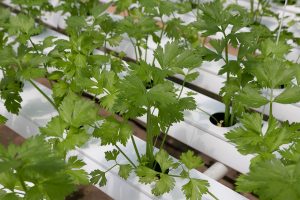
It is not difficult to grow vegetables at home. All it takes is a simple hydroponics system and a square foot of space.
If you are one of those who decided to start growing your own vegetables during the outbreak lockdown, you are not alone.
Advantages Of Hydroponics System
This is because growing food at home gives you that feeling of self-sufficiency. This trend has been gaining traction for some time already especially since the start of COVID-19.
In addition, growing your own veggies has other positive effects.
The patch of greenery only add aesthetic value to your home, it also helps you to feel a much-needed sense of control.
It is now possible to grow the usual herbs and leafy vegetables thanks to the advancement of hydroponics.
Do You Need Soil Or Water?
While soil is the more common choice, a hydroponics system has its benefits: It is easier to clean and allows for more control over the growing conditions.
Since there is less mess compared with soil, a hydroponics system can be placed just about anywhere in the home as long as you have adequate lighting, whether natural or artificial.
A great artificial lighting you can use is growing lights. Read up my post on growing lights fixture where I highlight the top 4 things you need to know to make your plant growing even better.
What Can You Grow?
A hydroponics system can be housed in an air-conditioned room thereby allowing you to be able to grow more plants like strawberries, blueberries and kale.
Growing berries is possible, but it requires a bit more research and understanding of the growth cycle, how to adjust the nutrients and the lighting to encourage the fruiting process. Typically, the flowers of these plants tend to wilt quickly when exposed to heat. They’ll need a carefully-controlled climate in order to reach the fruiting stage.
Is It Difficult To Setup Hydroponics System?
While setting up a hydroponics system may sound intimidating, it is an investment that can pay off.
A hydroponics system takes up a lot less space – where one square foot would typically be enough space for only one plant in a traditional soil-based system, the same square foot can take three or four plants in a hydroponics system. This means you can grow plenty more vegetables even in the limited space of a small home.
It is also easier to control the nutrients. You can buy pre-mixed nutrient formulations in the right ratio for plants, so there is less chance of excessive nutrient build-up (which can potentially be harmful to health) as is the case for soil.
These days, hydroponics systems come in all shapes and sizes. You can purchase off-the-shelf kits online or build your own.
Below is a short video showing how you can build your own at home.
Materials Needed:
- 10-20 gallon container
- Shallow container
- Fountain pump
- 6″ of plastic tubing
- Styrofoam sheet
- Net cups
- Rockwool cubes or Coconut core
- Lettuce seeds
- Nutrient solution
Here’s what you do:
- Drill 2 holes, one on each side, in the bottom of the shallow container.
- Attach tubing to the pump. Place the pump in the bottom of the bigger container.
- Put the other end of the tubing through one of the holes in the shallow container.
- Place the shallow container in the bigger one.
- Cut holes in the styrofoam sheet that are slightly smaller than the rim of the net cups.
- Place a net cup in each hole.
- Place the styrofoam and net cups in the shallow container.
- To test the system, place water in the bottom container, covering the pump, before plugging the pump in.
- To start the seeds, soak rockwool cubes and plant one seed per cube. Keep the cubes moist.
- When the seedlings are 2 inches tall, you can transplant them into your hydroponic system.
- Place one cube and seedling in each net cup.
- Fill the hydroponic system about halfway with water and nutrient solution.
- Place the system in a sunny window and plug in the pump.
All hydroponics systems essentially use the same concept. The most basic and accessible form would be one where you’ll have a container that holds water and nutrients, with the plants suspended in it. More common ones include a pump that circulates the water throughout the system.
The maintenance is relatively easy. After setting up, all you need to do is regularly check that the pump is running and clean the container occasionally.
Do You Have To Worry About Pests?
It is also essential to look out for pests when growing produce at home. Common ones include aphids, mealybugs and caterpillars. However, if your set-up is in an enclosed room, the chances of these pests finding their way to your plants are greatly reduced.